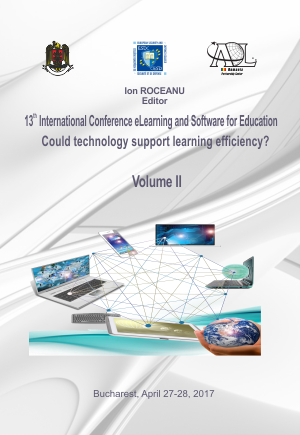WEBRTC BASED ELEARNING PLATFORM
WEBRTC BASED ELEARNING PLATFORM
Author(s): Titus Balan, Alexandra Stanciu, Stefania SURARIUSubject(s): Social Sciences
Published by: Carol I National Defence University Publishing House
Keywords: WebRTC; eLearning platform; real-time communications; virtual classroom.
Summary/Abstract: WebRTC (Web Real-Time-Communications) enable blended learning in universities and support the "virtual universities". In these "cloud universities", equipment vendors can also integrate their "laboratories as a service". The paper presents a Demonstrator platform based on Unify Circuit WebRTC integrated with other web-based applications that are exposing APIs and dedicated to simple browsers on "thin clients". Keywords: WebRTC; eLearning platform; real-time communications; virtual classroom INTRODUCTION The eLearning platforms are starting to compete with traditional learning resource centres and enable the so-called "virtual universities" to offer a big range of specializations. Also, for their certification programs, most vendors offer for training purpose virtual laboratories "as-a-service" (e.g. Cisco, Microsoft, VMware), but most of them are self-paced, so they miss the advantage of real-time communication and interaction with the teacher and other students, compared to the traditional hands-on teacher-led courses and workshops. Most course providers are having their own implementations and methods for deploying personalized laboratory lessons, difficult to integrate with course content from other providers. To solve these challenges, we propose a solution based on WebRTC (Web Real-Time-Communications) suggest a standard method to integrate real-time communications with heterogeneous course resources at web level. The eLearning platforms become easily accessible from the browser without the need of any plug-in or any dedicated client (then, from any "thin client"), having all the communication back-end running in the cloud. Not only the usage of the platform is facile, but having all components web implemented, standardized by W3C (World Wide Web Consortium), allows the integration with a big number of web-based applications that are exposing APIs (Application Programming Interfaces) in order to create complex personalized learning environments as simple web applications. As illustrative examples for integration with WebRTC features we could mention office suites like MS Office 365 or Moodle implementations. Unified communications and mobile office concepts can be extrapolated to the virtual classroom concept with features like voice, video, chat, on-demand ad-hoc assistance, content share, online laboratories and a lot of curricula related features (already part of Moodle). THE DEMONSTRATOR PLATFORM For our implementation demonstrator at DEC - Department of Electronics and Computers, presented in the paper, we have chosen Circuit, the webRTC framework offered by Unify, which offers different Software Development Kits for JavaScript, node.js and RESTful API, and also allows free-of-charge invitations for real-time communication guest users.
Journal: Conference proceedings of »eLearning and Software for Education« (eLSE)
- Issue Year: 13/2017
- Issue No: 02
- Page Range: 48-55
- Page Count: 8
- Language: English

